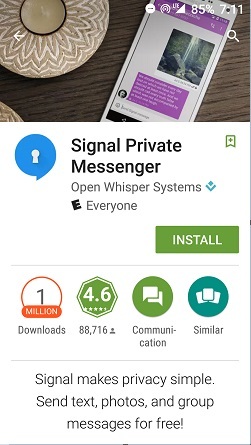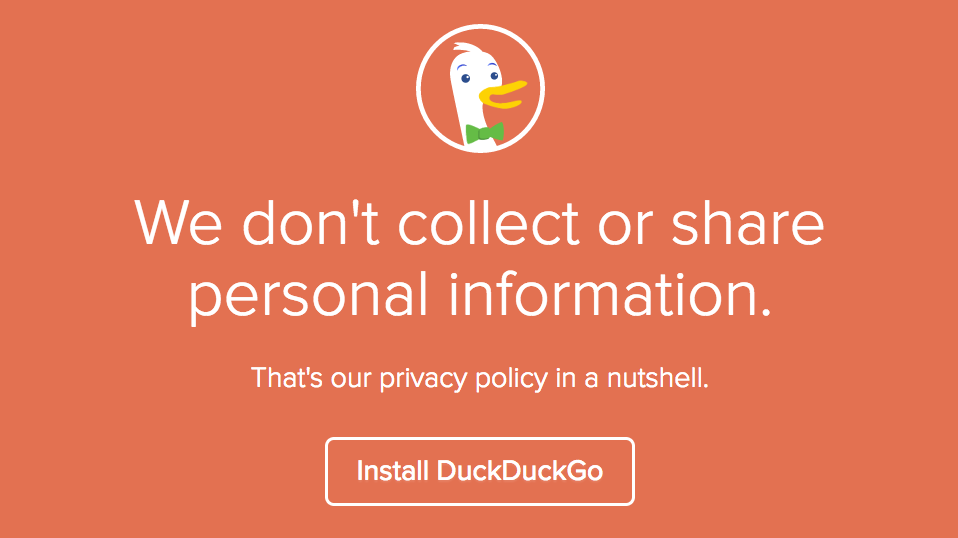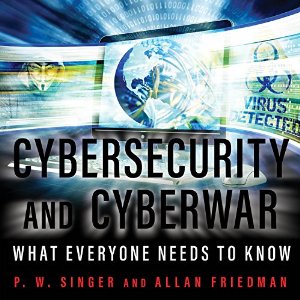We explain to grandma: How to encrypt in an hour
"Only the paranoid survive."
- Andy Grove

Andy Grove was a Hungarian refugee who escaped from the Communists, studied engineering, and ultimately led the computer revolution as the CEO of Intel. He died earlier this year in Silicon Valley after a long struggle with Parkinson's disease.
When one of the most powerful people in the world encourages us to be paranoid, perhaps we should listen.
')
Forced to warn that Grove is not the only influential person who calls for it. Even the director of the FBI — the same person who recently paid a million dollars to hackers to unlock a terrorist’s iPhone — strongly recommends that everyone hide their webcams.
But you obey the law. What do you fear? As the motto of the United Kingdom’s surveillance program says: “If you have nothing to hide, you have nothing to fear.” Well, law-abiding citizens have reason to fear. They have reason to protect their devices, files, and communication with loved ones.
“If someone gives me six lines written by the most honest person, I will find something to hang him for.”
- Cardinal Richelieu in 1641.
In this article I will show you how to secure yourself using the art of encryption. In one sitting, you can take a big step towards ensuring your privacy.
Publishing support is Edison , which develops crowdsourcing platforms for product promotion and designs applications for an interactive real estate database .
Common sense of safety for all
To be clear, everything that I recommend is 100% free and 100% legal. If you take the time to lock the door at night, you should take care of encryption.
"Be ready".
- Scott Motto
Let's get ready
First, a couple of definitions. When I use the word "intruder," I mean anyone who tries to access your data without your permission — be it a hacker, a corporation, or even a government.
And when I use the terms “private” or “safe” I do it for a reason. The reality is that while people are involved - no system will ever be 100% private or 100% secure.
As long as your phones, computers, and accounts are sufficiently protected, their content remains an “encrypted lump” and few people, no matter how powerful they are, can do anything about it.
Tip # 1: Use two-factor authentication on your mailbox
Your mailbox is the master key to your life. If an attacker compromises him, he can not only read your letters, but also use it to reset passwords to anything, including your social network accounts and even bank accounts.
The simplest thing you can do to significantly improve your security is to enable two-factor authentication on your mailbox.
In fact, two-factor authentication is the second level of security at login. It is usually associated with receiving an SMS with a special code when you log into your account.
Two-factor authentication significantly reduces the likelihood of hacking your mail.
If you are using Gmail, you must activate two-factor authentication here.
Now.
Seriously.
I will still be here when you return.
Tip # 2: Encrypt your hard drive

Both Windows and MacOS have built-in full disk encryption. You just have to turn it on.
Tip # 3: Enable password protection for your phone.
Fingerprint identification is better than nothing, but often it is not enough.
The fifth amendment (not to testify against yourself) allows you to keep your password secret. But the court may force you to unlock the phone with a fingerprint.
In addition, you can not change your fingerprint after the attacker will get it.
An attacker usually has 10 attempts before the phone is completely blocked. So if your 4-digit password is one of the most common, change it.
1234
9999
1111
3333
0000
5555
1212
6666
7777
1122
1004
1313
2000
8888
4444
4321
2222
2001
6969
1010Additional advice: if you use fingerprint identification for convenience, then know that if you are ever arrested, you should immediately turn off the power to your phone. When the authorities turn it on again, they will not be able to unlock it without a password.
Tip # 4: Use different passwords for each service.
It’s not safe to use the same passwords everywhere.

Mark Zuckerberg used the password “dadada” on his LinkedIn account. Earlier this year, when hackers released 117 million email password combinations, this one was among them. Hackers were able to use his email and password to access his Twitter and Pinterest.
Therefore, do not use one password for more than one site.
Of course, remembering a bunch of passwords is quite problematic. Therefore, use a password manager.
Tip # 5: Send messages using Signal
Signal is a popular messaging service that received the highest score from the Electronic Frontier Foundation. You can do everything that you usually do, such as creating conversations and sending photos and videos. Only all of this will be encrypted.
Signal is free, is in the public domain, it can be purchased at app stores on iOS and Android. I was able to install it and begin to securely exchange messages with friends and family in less than 5 minutes.
Step # 1: Install Signal

Step # 2: Invite friends to install Signal too

Step # 3: Submit Messages

Congratulations - now you can communicate with your friends and family about anything, and it will be almost impossible to spy on your conversation.
You can also use Signal to make secure phone calls.
Tip # 6: Incognito mode in the browser is not enough private
Even if you use “incognito mode” in Chrome or “private browsing” in Firefox, the following people will still be able to see your online activity:
• Internet providers
• System administrators lead your network at school, in the workplace, or wherever you are online
• Google or any other company that made your browser.
Internet Explorer, Safari, Opera, and other browsers are no longer confidential.
If you want a private browser (within reason, since no system can be 100% confidential), use Tor.
Tip # 7: Search online confidentially with Tor
Tor stands for the onion router. This comparison is used because it uses multiple layers (like a bow) of network activity masks. It is free, publicly available and quite simple to use.
Step # 1: Download Orbot

Step # 2: Download Orfox Browser

Step # 3: Open Orbot

Step # 4: Open Orfox

Step # 5: Make sure everything works
Visit check.torproject.org to see if everything works. Congratulations - now you can use the Internet with peace of mind, as you are extremely difficult to track.
Tip # 8: Look for information in confidence
If Tor is not convenient enough for you, you can at least use a secure search with DuckDuckGo. His search engine does not track you.

DuckDuckGo doesn't have a thousand engineering years drenched in a search engine that Google has. But they have quick access, allowing you to get encrypted searches on Google if you need them. You just need to write "! Google" in the search bar before searching for anything.

And you can also read a book:

Cybersecurity and Cyberwar: What Everyone Needs to Know
Source: https://habr.com/ru/post/315132/
All Articles